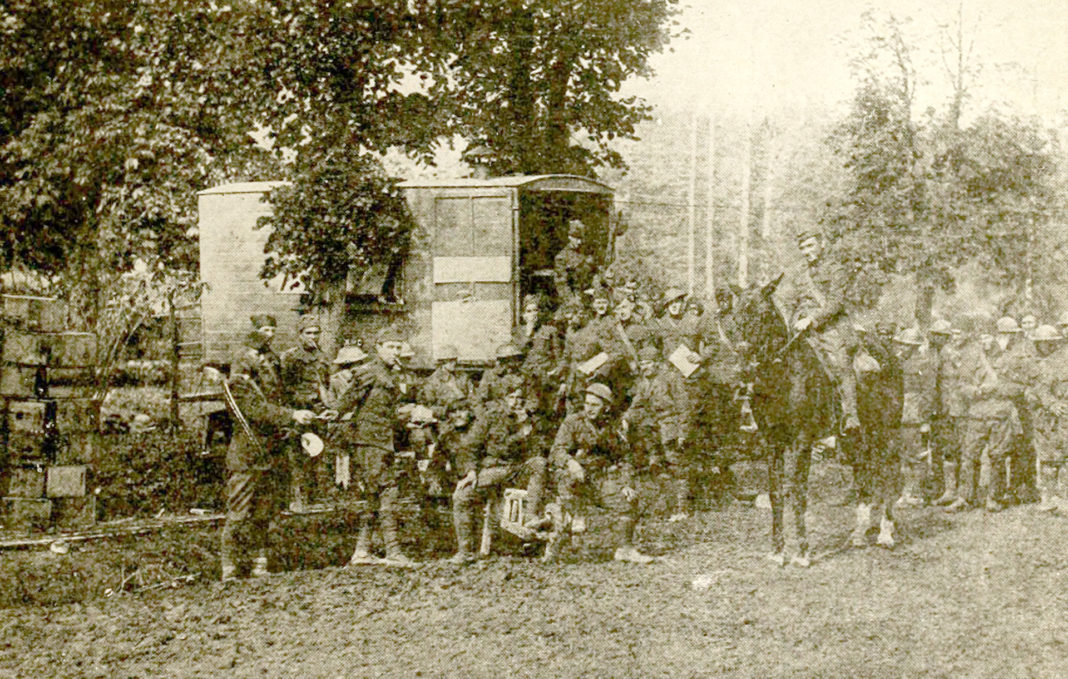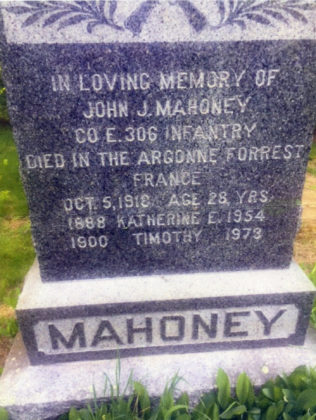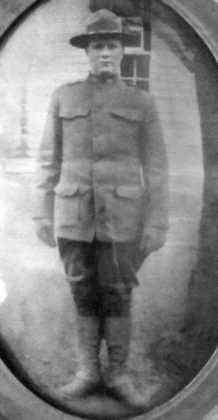By Joe Aherne Snr, Kilworth
October 5th, 1918
At this time 100 years ago, my granduncle John ('Jack') Mahony was killed in action in the battle of Argonne Forest. He, along with my grandfather Sylvester (Syl) O’Sullivan, were members of the 306 Infantry and assigned to the 153rd Infantry Brigade of the 77th Division.
Jack was just 28 years of age and from Dromgunna, Rosscarbery, Co Cork and Syl, who was 27 years of age, was his neighbour from Millcove, Rosscarbery, Co Cork.
The unit (77th Division) was given the name ‘The Lost Battalion’.
Argonne Forest before the attack
The Argonne Forest was seized by the Germans at the early stages of the war. They had set up defensive positions throughout the forest, using a string of networked trenches. These defences started with a roughly 550-yard (500m) deep front line, which "served as not much more than an advanced warning system". Beyond the first line, which consisted of trenches, shell holes, and listening posts, the Allies would have to push through the dense forest to the main battle lines.
The next battle line, which was about 1 mile (2km) in depth, had turned back all Allied attacks over the last four years. This battle line, which consisted of wired trenches that were firmly held, was referred to by the Germans as "Hagen Stellung" ("Hagen position").
The next German battle line, referred to as the "Hagen Stellung-Nord" ("Hagen position-North"), was "basically a machine-gun-covered, pre-sighted artillery target." This was a very well entrenched location utilising both natural and man-made barriers.
Together, these two battle lines formed what was known as "Etzel Stellungen" ("Etzel postions").
The Hagen Stellung-Nord formed the most difficult problem. Over the years, the Germans had pre-sighted every square inch of the area in case of a hostile takeover.
Should attackers take the Hagen Stellung-Nord, they came immediately into danger of annihilation by German artillery. No occupier could remain there for long.
The Germans also spread barbed wire for hundreds of miles. At various points, it was higher than a man’s head and several, even many, yards deep.
The Germans also placed barbed wire at the bottom of rivers and small streams to prevent any troop movement across these areas.
Action in the Argonne
The Lost Battalion is the name given to the nine companies of the United States 77th Division, roughly 554 men, isolated by German forces during World War I after an American attack in the Argonne Forest in October 1918. Roughly 197 were killed in action and approximately 150 missing or taken prisoner, before the 194 remaining men were rescued. They were led by Major Charles White Whittlesey.
On 2nd October, the 77th launched an attack into the Argonne, under the belief that French forces were supporting their left flank and two American units including the 92nd Infantry Division were supporting their right. Within the 77th sector, some units including Whittlesey's 1-308th Infantry, were making significant headway.
Unknown to Whittlesey's unit, the units to their left and right had been stalled. Without this knowledge, the units that would become known as the Lost Battalion moved beyond the rest of the Allied line and found themselves surrounded by German forces.
For the next six days, suffering heavy losses, the men of the Lost Battalion and the American units, desperate to relieve them, would fight a terrific battle in the Argonne Forest.
The battalion suffered many hardships. Food was scarce and water was available only by crawling, under fire, to a nearby stream. Ammunition ran low. Communications were also a problem, and at times they would be bombarded by shells from their own artillery.
As every runner dispatched by Whittlesey either became lost or ran into German patrols, carrier pigeons became the only method of communicating with headquarters. In an infamous incident on 4th October, inaccurate coordinates were delivered by one of the pigeons and the unit was subjected to friendly fire.
The unit was saved by another pigeon, Cher Ami, delivering the following message:
‘We are along the road paralell (sic) 276.4. Our artillery is dropping a barrage directly on us. For heavens sake stop it’.
This pigeon, Cher Ami, had been shot through the breast, blinded in one eye and had a leg hanging only by a tendon. The pigeon was tended to by Army medics, and was considered a hero of the 77th Division for helping to save the lives of the 194 survivors.
Jack Mahony spoke with Sylvester O’Sullivan the day before he was killed – both wishing each other well. Unfortunately, Jack didn’t make it. Like so many others, they were in an unbelievably difficult situation (lambs to the slaughter comes to mind), even coming under fire from their own troops. They were brave men and should be remembered – I am very proud of both of them.
Of the over 500 soldiers who entered the Argonne Forest, only 194 walked out unscathed. The rest were killed, missing, captured or wounded.
Major Charles White Whittlessey, Captain George G McMurtry and Captain Nelson M Holderman received the Medal of Honour for their valiant actions. Whittlessey was also recognised by being a pallbearer at the ceremony interring the remains of the Unknown Soldier.
















